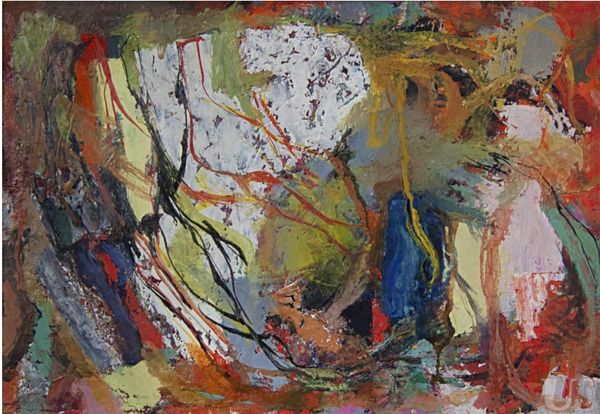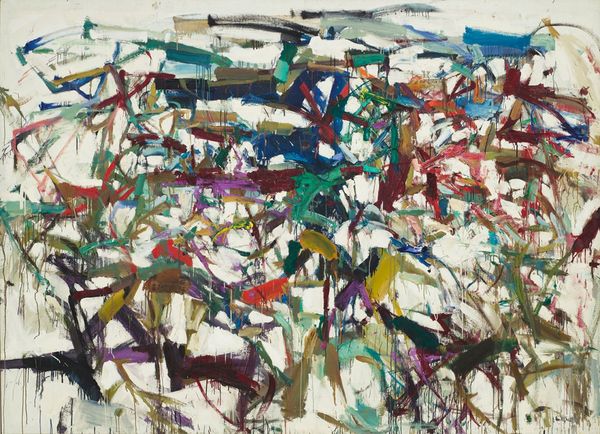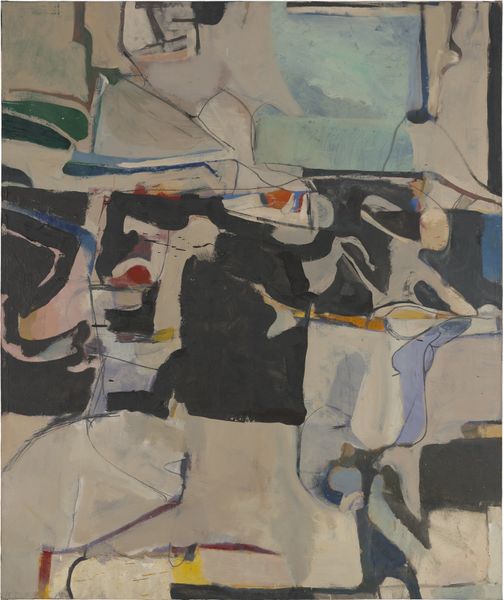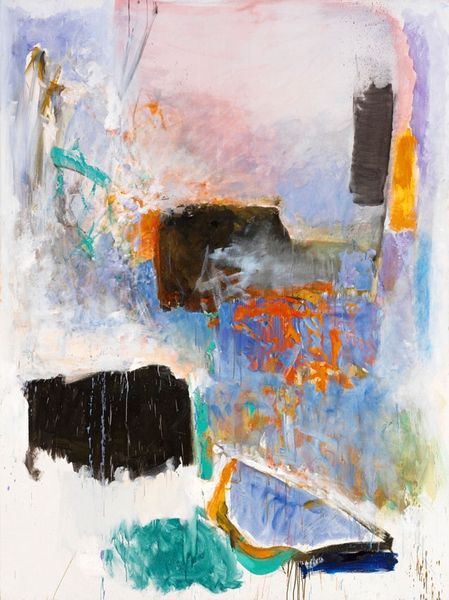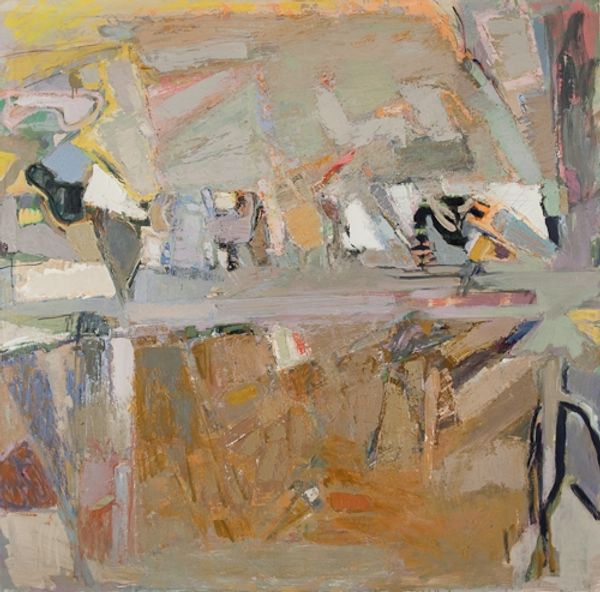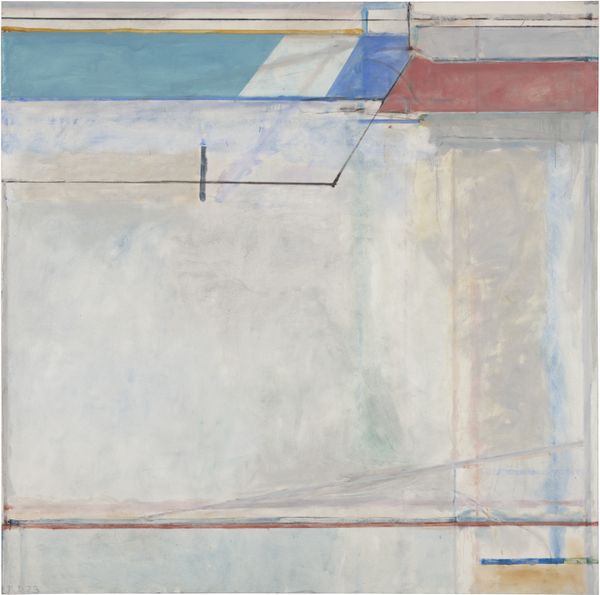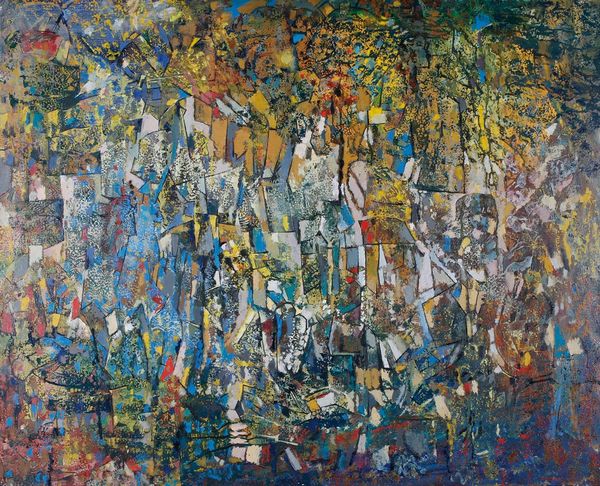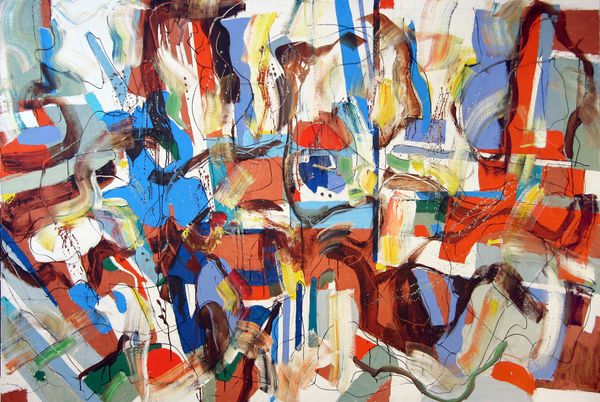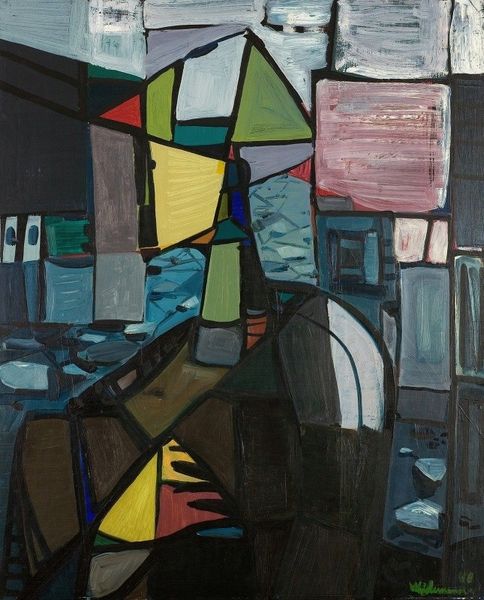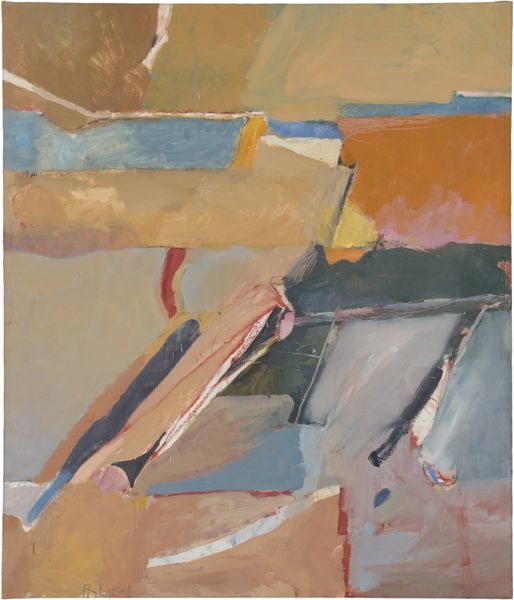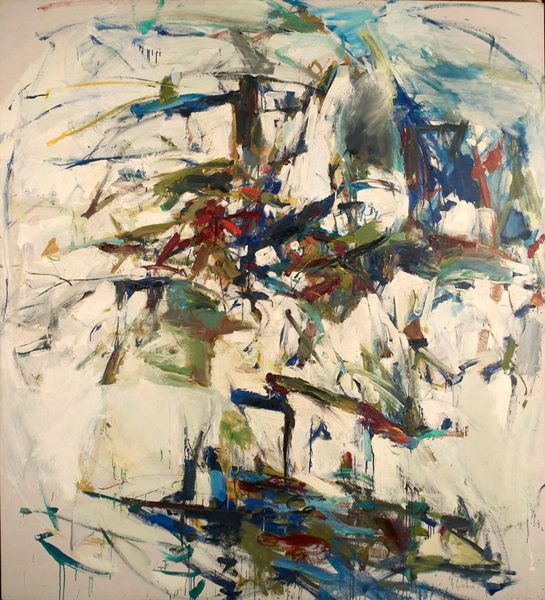
acrylic-paint
#
abstract-expressionism
#
abstract expressionism
#
acrylic-paint
#
form
#
geometric-abstraction
#
modernism
Copyright: Richard Mortensen,Fair Use
Curator: Richard Mortensen created "Gamla staden, opus 5" in 1948, utilizing acrylic paint to explore geometric abstraction, very much in the abstract expressionist style of the time. Editor: Wow, that's quite a mouthful. My immediate impression is controlled chaos. Angular shapes swimming in what seems to be white noise... but with splashes of brilliant, almost unnerving, blue. It kind of messes with your head, doesn’t it? Curator: Absolutely. The immediate postwar years saw many artists grappling with how to represent the shattered sense of order, and Mortensen’s use of fragmented geometric forms really embodies that. The work operates within the broader context of Modernism, and certainly questions traditional modes of representation. Editor: "Shattered" is the perfect word! Look how the lines clash and almost stab. And then that thick red bar on the left - it’s like a scream trapped on the canvas, isn't it? This isn't just shapes; there's angst pouring out! What's even more fascinating to me is the feeling of instability; this piece lacks any real anchor or sense of grounding. I feel a sense of anxiety creeping in just by observing. Curator: The title, "Gamla staden" or "The Old Town," adds another layer. Consider that perhaps Mortensen is attempting to represent memory and the way we often remember it through abstraction, rather than providing some accurate or historical visual document. This places Mortensen in direct conversation with many postwar movements interested in not merely portraying life, but expressing inner realities. Editor: Now you're talking! Memories... I can dig that. The overlapping, distorted geometry might represent how fractured those recollections become over time, and it’s less about seeing the streets literally but instead about communicating how we can reconstruct feelings and ideas through non-literal expression. And perhaps this is why I react to that vibrant yet subtle interplay. It feels very honest, but not polished. Curator: Exactly, it is that rawness combined with its intellectual grounding that distinguishes this work from so many other examples of Abstract Expressionism during this same time period. It holds its own! Editor: Indeed! This piece offers more than just a history lesson. It asks you to really FEEL it and remember what is often left unsaid. Thanks to Richard Mortensen!
Comments
No comments
Be the first to comment and join the conversation on the ultimate creative platform.
